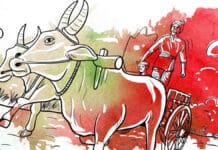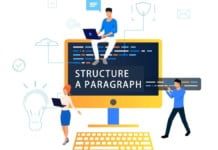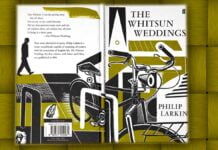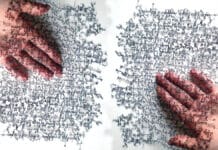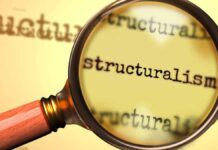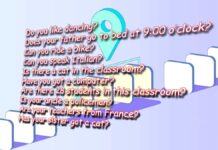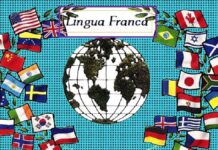The English language contains dozens of poetic devices. Any expression that influences how a poem or other written work looks, sounds, or feels is a poetic device. It is a unique literary tool that shapes words, sounds, and phrases to convey meaning. Poetic devices empower speakers and writers to enhance the literal meaning of words by drawing attention to their sound, form, and function. This includes devices also classified as literary or rhetorical devices, such as many figures of speech.
Alliteration
Alliteration is the repetition of initial consonant sounds in closely placed words. It creates a musical quality in the text, enhances mood, and can make phrases more memorable.
E.g., “Peter Piper picked a peck of pickled peppers” (repetition of the ‘p’ sound).
Assonance
Assonance is the repetition of vowel sounds within words, regardless of whether the consonant sounds are the same. It creates internal rhyme and rhythm, adds a musical element to poetry, helps to unify lines, and can emphasise particular feelings or ideas.
E.g., “Light in white silk“ (repetition of the ‘i’ sound).
Simile
A simile compares two unlike things using “like“ or “as”. It makes descriptions more vivid and helps readers understand abstract concepts by comparing them to familiar objects or experiences.
E.g., “Her eyes were as bright as the stars”.
Metaphor
A metaphor directly compares two unlike things without using “like“ or “as”. It creates a more powerful image in the reader’s mind by asserting that one thing is another, thereby suggesting a deeper connection between them.
E.g., “All the world’s a stage,
And all the men and women merely players.“ (William Shakespeare)
Metonymy
Metonymy is a figure of speech in which a thing or concept is referred to by the name of something closely associated with it. It helps to create a more vivid or concise way of describing something, often lending it a more symbolic or cultural significance.
E.g., “The pen is mightier than the sword“ (where “pen“ represents writing and “sword“ represents military force).
Hyperbole
Hyperbole is an intentional exaggeration used to emphasise a point or express strong emotion. It adds drama, humour, or intensity to expression.
E.g., “I’ve told you a thousand times to clean your room.“
“His bag weighed a ton.”
Personification
Personification attributes human qualities—such as emotions, thoughts, or actions—to non-human objects, animals, or abstract ideas. It makes descriptions more vivid and relatable.
E.g., “The wind whispered through the trees.”
“The angry storm pounded on the roof.”
Oxymoron
An oxymoron combines two opposing or contradictory terms to create a striking effect. It draws attention to paradoxes and emotional complexity.
E.g., “Deafening silence.“
“Sweet sorrow.“ (William Shakespeare)
Onomatopoeia
Onomatopoeia uses words that imitate or suggest the sound they describe. It enhances sensory experience and adds realism to imagery.
E.g., “The bees buzzed and the brook gurgled softly.“
“The thunder roared as the rain splashed.”
Image
An image in poetry is a vivid description that evokes a sensory experience. It can appeal to any of the five senses—sight, sound, smell, taste, touch—and helps create a more immersive experience for the reader.
E.g., “The crimson sun dipped below the horizon, painting the sky with fiery hues”.
Symbol
A symbol is an object, person, or event representing a more profound meaning or abstract concept beyond its literal sense. It adds layers of meaning to a poem, allowing readers to uncover deeper themes and messages.
E.g., The raven in Edgar Allan Poe’s The Raven symbolises death and loss.
Synesthesia
Synesthesia blends sensory experiences by describing one sense in terms of another. It reflects how the senses overlap and enhances the poem’s imagery and emotional texture.
E.g., “The loud colours screamed from the canvas.“ (sound described as sight)
“I tasted the bitter cold.“ (taste described as touch)
Pathetic Fallacy
Pathetic Fallacy attributes human emotions to nature, weather, or surroundings to reflect the mood of a scene or the inner feelings of characters. It creates an emotional atmosphere and harmony between the character and the setting.
E.g., “The sullen clouds wept all night long.”
In Wuthering Heights, the storm mirrors emotional chaos and passion.
Meliorism
Meliorism is the belief that the world can be improved through human effort and compassion. In literature and poetry, it expresses optimism, moral progress, and faith in humanity’s ability to bring about change. Poets use meliorism to convey hope amidst suffering and to suggest that goodness can transform the world.
E.g., In Leaves of Grass, Walt Whitman expresses melioristic faith in humanity’s potential for growth and unity.
“Even in darkness, the heart dreams of light.“ (implied human hope and improvement)
Rhyme
Rhyme is the repetition of similar-sounding words at the end of lines in poems or songs. It creates rhythm, enhances the musical quality of the poem, and makes it more memorable.
Types of Rhyme
End Rhyme: Rhyming of the final words of lines.
E.g., “Tyger Tyger, burning bright,
In the forests of the night“ (William Blake).
Internal Rhyme: Rhyming within a single line.
E.g., “Once upon a midnight dreary, while I pondered, weak and weary“ (Edgar Allan Poe).
Slant Rhyme (or Near Rhyme): Words with similar but not identical sounds.
E.g., “When have I last looked on
The round green eyes and the long wavering bodies
Of the dark leopards of the moon?“ (William Butler Yeats).
Purpose
These poetic devices serve various purposes.
- They enhance the musicality and rhythm of the poem.
- They create vivid imagery and sensory experiences.
- They can emphasise certain words or ideas.
- They add layers of meaning and complexity to the poem.
- They can evoke emotional responses in the reader.
- They make the poem more memorable.
Poets often use these devices in combination to create rich, multifaceted works. Understanding them enhances the appreciation of poetry by revealing how poets use language to create rhythm, convey meaning, and evoke emotions. Each device is crucial in the poet’s toolkit, enabling them to craft rich, layered, impactful works.







